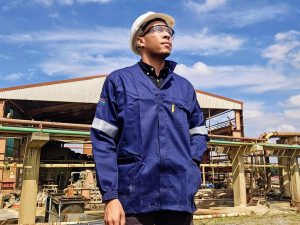EPFL researchers have developed a new elastomer-based ink for 3D printing objects with locally changing mechanical properties, eliminating the need for cumbersome mechanical joints in soft actuators and robots. Elastomers are synthetic polymers with a range of mechanical properties, from stiff to stretchy, making them ideal for applications in soft robotics or wearable devices. However, manufacturing elastomers with complex 3D structures that transition from rigid to rubbery has been challenging until now.
The researchers developed DNGEs, 3D-printable double network granular elastomers that can vary their mechanical properties to an unprecedented degree. PhD student Eva Baur used DNGEs to print a prototype ‘finger’ with rigid ‘bones’ surrounded by flexible ‘flesh’, demonstrating the technology’s potential to manufacture devices that are supple enough to bend and stretch while remaining firm enough to manipulate objects. This advancement could revolutionize the design of soft actuators, sensors, and wearables by eliminating heavy, bulky mechanical joints.
The versatility of DNGEs lies in engineering two elastomeric networks: the composition of the first network determines the structure’s stiffness, while the second network determines its fracture toughness and fatigue resistance. These networks can be fine-tuned independently to achieve a combination of stiffness, toughness, and fatigue resistance. DNGEs have the advantage over hydrogels, the material used in current approaches, of being water-free and more stable over time. Additionally, DNGEs can be printed using commercially available 3D printers, making them accessible and easy to use.
One potential application of DNGEs is in devices for motion-guided rehabilitation, where the ability to support movement in one direction while restricting it in another could be highly useful. Further development of this technology could lead to prosthetics or motion guides to assist surgeons. Another potential application is in sensing remote movements, such as in robot-assisted crop harvesting or underwater exploration. The Soft Materials Lab at EPFL is working on integrating active elements, such as responsive materials and electrical connections, into DNGE structures to enhance their capabilities.
The researchers believe that DNGEs could be a game-changer in soft robotics and wearable devices by providing a solution to the challenge of keeping things light and comfortable. With the ability to vary mechanical properties locally in 3D-printed objects, DNGEs offer a new level of flexibility and versatility in design. This technology has the potential to revolutionize the field of soft robotics and open up new possibilities for the development of innovative devices and applications in various fields.





